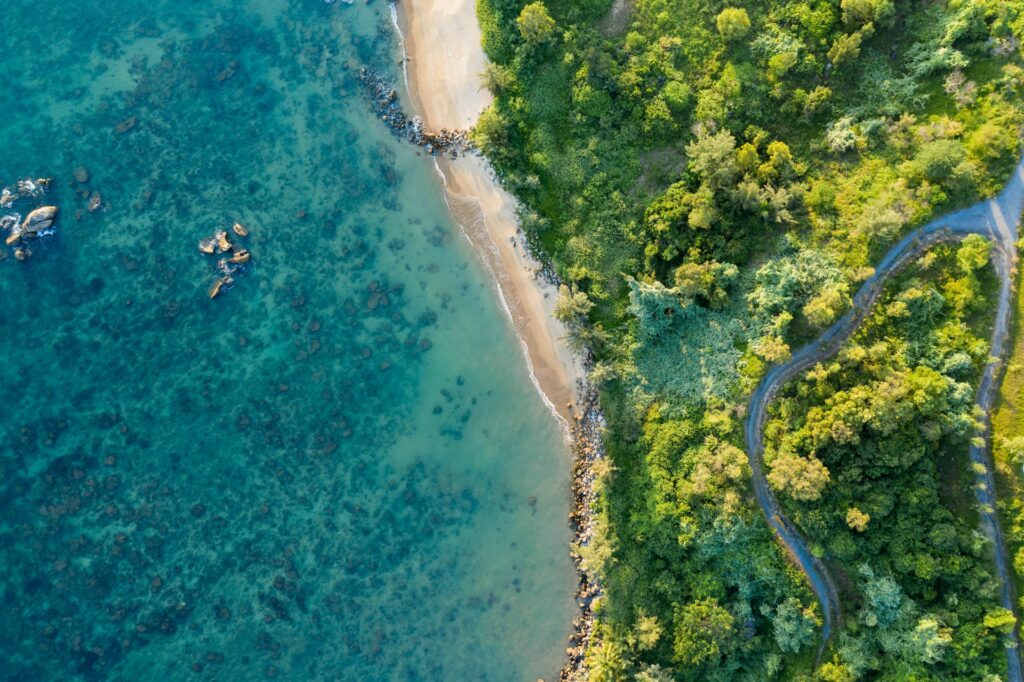If you’re planning a trip to Costa Rica, doctors and health experts strongly urge travelers to safeguard against malaria.
This comes after a recent alert from the U.S. Embassy in Costa Rica – warning travelers of an increase in the number of malaria cases.
In this guide, we’ll go over everything you need to know about malaria in Costa Rica, including:
- The regions where you’re most at risk
- The preventive measures you can take
- How to stay safe during your travels
How Strong of a Concern is Malaria in Costa Rica?
Mosquitoes capable of transmitting malaria are present throughout the country, particularly in rural and forested regions where humidity and standing water provide ideal breeding conditions. Mosquito prevalence can occur anywhere outdoors, and density tends to increase as you move away from urban centers into coastal and lowland areas.
If your trip is primarily city-based, for example, in San José or other urban environments, your risk of malaria is low. Urban areas benefit from stronger mosquito control programs and lower transmission rates. However, spending extended time outdoors, especially in rural or undeveloped areas, can increase your exposure risk.
The highest malaria transmission in Costa Rica typically occurs in Limón Province (along the Caribbean coast), Alajuela Province (northern border regions), and parts of the northern Caribbean lowlands. Travelers visiting these regions for eco-tours, volunteer work, or extended rural stays should take standard precautions, such as using insect repellent, sleeping under treated bed nets, and wearing long-sleeved clothing in the evenings.
Consulting with a travel health physician before departure, or through Runway Health online, can help determine whether malaria medication such as Malarone or Doxycycline is recommended for your specific itinerary and activities.
Regions with Malaria Risk in Costa Rica
The majority of malaria cases are reported in rural, jungle areas where mosquito activity is higher.
Here’s a quick overview, from each region mentioned above:
1. Limón Province
This region contains lush rainforests along the Caribbean coast in Limón, so you’ll want to be prepared for possible malaria transmission. The tropical climate and dense vegetation create prime breeding grounds for mosquitoes.
If you’re planning to explore Limón’s national parks, jungle lodges, or coastal wildlife areas, basic measures like insect repellent and long clothing are essential, but they may not be sufficient for prolonged outdoor exposure. Many travelers, especially those visiting remote rainforest regions, choose to consult with a travel health provider about taking preventive antimalarial medication before arrival.
2. Northern Caribbean Lowlands
Stretching along the border with Nicaragua, the Northern Caribbean Lowlands are home to remote river systems, dense jungle, and small rural communities. This environment supports high mosquito activity and has historically reported malaria cases, particularly during or after the rainy season.
Travelers planning to trek through rainforest areas, visit remote villages, or stay in eco-lodges should take extra precautions, including using insect repellent consistently, sleeping under insecticide-treated bed nets, and taking antimalarial medication if prescribed. Because healthcare access can be limited in these remote areas, prevention is especially important.
3. Alajuela Province
Although not all of Alajuela is high risk, certain rural areas in this province have reported frequent malaria cases. If you’re visiting Alajuela for outdoor adventures, rural homestays, or eco-tourism experiences, practicing preventive measures remains a smart precaution.
Keep in mind that malaria risk in Costa Rica is not widespread across the country, with terrain & environmental factors having a big impact on mosquito density.
Seasonality Factors
Malaria risk in Costa Rica tends to rise during the rainy season, which typically runs from May through November. During this period, heavy rainfall creates numerous pools of standing water, providing ideal breeding grounds for mosquitoes. The combination of high humidity, warm temperatures, and abundant vegetation leads to increased mosquito activity, particularly in rural and low-lying areas such as Limón Province and the Northern Caribbean Lowlands.
Even though malaria transmission peaks during the rainy season, some level of risk persists year-round in known high-risk zones. Mosquitoes can survive and breed in residual water sources long after rainfall ends, and travelers spending time outdoors in remote areas may still encounter exposure during the dry season (December to April).
If you’re visiting Costa Rica during the rainy season and plan to explore rural, coastal, or jungle environments, it’s especially important to take preventive precautions such as using insect repellent, wearing long sleeves, and sleeping under treated bed nets. For added protection, speak with a travel health physician about whether antimalarial medication, like Malarone or Doxycycline, is recommended for your itinerary.
Even during the dry season, travelers heading to historically high-risk areas should continue to practice mosquito bite prevention. Understanding how seasonality affects malaria transmission will help you plan safer travels and stay healthy while enjoying Costa Rica’s tropical landscapes.
Preventive Measures to Avoid Malaria in Costa Rica
Preventing malaria comes down to two main strategies: avoiding mosquito bites and, in many cases, taking antimalarial medication. Here are some practical tips to reduce your risk of malaria while traveling in Costa Rica.
1. Antimalarial Medication
If you’re traveling to malaria-prone areas in Costa Rica, especially rural regions in Limón or the northern Caribbean lowlands, your doctor may strongly recommend taking antimalarial medication.
See Pricing for Anti-Malarials Online ➜
The most common medications prescribed for malaria prevention include:
- Malarone (Atovaquone-Proguanil) – A highly-effective option with relatively few side effects (especially when taken with food). This medication is often the first choice for travelers to malaria-risk areas.
- Doxycycline – Another option, though it requires a longer course of treatment. Some travelers may experience side effects like headaches, nausea/vomiting and joint pain while using Doxycycline.
- Mefloquine (Lariam) – A less commonly used option, which also has side effect concerns for travelers (such as disorientation/balance issues, difficulty sleeping and nausea/vomiting). It’s typically recommended only when other medications aren’t suitable.
Make sure to start your medication before entering the malaria zone and continue taking it as directed after you leave. Each medication has its own unique duration and dosing schedule.
2. Prevent Mosquito Bites
Since malaria is transmitted by mosquito bites, the best way to avoid the disease is by avoiding getting bitten. Here are some tips for effective bite prevention:
- Use insect repellent – Choose a repellent containing at least 20-50% DEET, which is highly effective in repelling mosquitoes. Apply it to all exposed skin. Keep in mind – mosquitoes are most active during sunrise and sunset, when temperatures are more favorable.
- Wear protective clothing – Long sleeves, pants, and socks can help minimize the amount of exposed skin. Light-colored clothing is recommended because mosquitoes are more attracted to darker colors.
- Sleep under a mosquito net – If you’re staying in an area without air conditioning or sealed windows, sleep under an insecticide-treated mosquito net. This adds an extra layer of protection, particularly if mosquitoes are active at night.
- Stay in air-conditioned rooms – Air conditioning reduces the likelihood of mosquitoes entering your sleeping space. If you’re staying in rural areas or jungle lodges, prioritize accommodations that offer either air conditioning or well-screened windows and doors.
3. Understand Time-of-Day Risks
In Costa Rica, the mosquitoes that transmit malaria, primarily the Anopheles species, are most active during dusk and dawn, when temperatures are cooler and humidity is higher. These twilight hours provide the perfect conditions for mosquito feeding, which means travelers are at greatest risk of bites early in the morning and again in the evening.
While mosquitoes can be present at any time of day, especially in shaded or humid areas, being extra vigilant during these peak periods is key to reducing your risk of exposure. Applying insect repellent containing DEET, picaridin, or oil of lemon eucalyptus before dusk and reapplying as directed can provide strong protection. Wearing light-colored, long-sleeved clothing and pants also helps reduce bites, particularly if you’re spending time outdoors, dining outside, or hiking in rural areas.
If you’re staying in accommodations that are open-air or not well screened, using insecticide-treated bed nets is an added safeguard during nighttime hours. By planning your outdoor activities to avoid peak mosquito times and taking consistent preventive measures, you can greatly reduce your chances of being bitten and lower your risk of contracting malaria during your stay in Costa Rica.
4. Be Mindful of Environmental Factors
Mosquitoes thrive in warm, humid environments, especially those with standing water. In Costa Rica, malaria-carrying mosquitoes are more common in areas with dense vegetation, rivers, or wetlands.
If you’re visiting rural areas, national parks, or jungle regions, take extra precautions. Even in urban areas where the risk of malaria is lower, it’s wise to be cautious, especially if sanitation systems are poor.
Malaria Symptoms to Watch Out For
Even with all precautions, it’s still possible to contract malaria. That’s why it’s crucial to recognize the symptoms and seek medical attention immediately if you start feeling unwell.
Symptoms of malaria include:
- High fever
- Chills and sweats
- Headaches
- Muscle aches and fatigue
- Nausea or vomiting
These symptoms typically develop 7 to 30 days after being bitten by an infected mosquito, although they may appear later depending on the specific malaria parasite involved. Because the early signs of malaria can resemble other common tropical illnesses, such as dengue fever or viral infections, it’s important not to self-diagnose or delay care.
If you suspect you’ve been exposed to malaria and begin feeling unwell, seek medical attention immediately. Healthcare providers in Costa Rica are trained to recognize and test for malaria using a simple blood test, which can confirm infection within minutes. Early treatment with prescription antimalarial medications is highly effective and can prevent serious complications.
When visiting a clinic or hospital, be sure to inform the doctor about your travel history, any mosquito exposure, and whether you took preventive medication such as Malarone or Doxycycline. This information helps guide accurate diagnosis and treatment.
Recognizing symptoms early and acting quickly ensures a full recovery and helps you safely continue your travels or return home without lasting health concerns.
Costa Rica’s Healthcare System
Costa Rica has a well-developed healthcare system, particularly in urban centers. If you contract malaria while traveling, you should be able to receive prompt and effective treatment in most cities and towns.
However, in rural & remote regions access to healthcare might be limited, so it’s wise to plan ahead and know where the nearest medical facilities are located.
Do You Really Need Malaria Tablets for Costa Rica?
The question of whether you need to take malaria tablets depends largely on where you’re traveling in Costa Rica.
Urban and beach areas tend to have lower risk, but if your plans take you to malaria-prone areas like Limón or the northern Caribbean lowlands, it’s a good idea to consult a travel doctor and consider taking antimalarial medication.
Ultimately, your decision should be based on your itinerary, the time of year you’re traveling, and your personal health history alongside a discussion with a travel health physician.
Final Word
By understanding high-risk areas in Costa RIca, taking antimalarial medication if prescribed, and using preventive measures like insect repellent, you can enjoy your trip without any major risk.
Before your trip, consult with a physician to discuss your travel plans and determine the best course of action for malaria prevention. If you need a prescription for malaria tablets, online telehealth services like Runway Health can provide a convenient and affordable option, allowing you to avoid lengthy clinic visits.
With the right precautions, you can explore all the beauty and adventure Costa Rica has to offer while staying safe from malaria.

